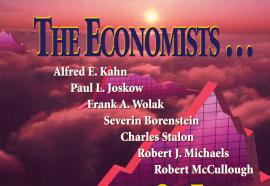CFOs speak out: Growth Strategy for the 21st Century
For The 21st Century
Interviews by
So it begins again. After several financially tumultuous years, executives at many of the nation's top utilities can once again look to the horizon and ask the growth question worthy of a Caesar: "What worlds to conquer?"
Utility executives are emboldened by bulging free cash flows, improved credit quality, lower operations and maintenance costs, favorable regulatory treatment, growing service territories, and increasing demand for power.


